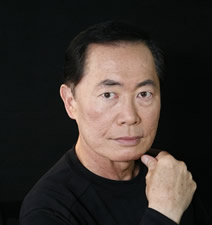Double concertos are among the least common of genres in the repertoire of Western music, and of course triple concertos are even more rare; it is definitely an uncommon treat to hear both on the same program. This is exactly what the NC Symphony did – with a trio of fantastic and world-renowned soloists, they performed the most well-known triple concerto, Beethoven’s Op. 56, and one of the most well-known double concertos, Brahms’ Op. 102. The concert was already bound to be fantastic with pianist Awadagin Pratt, violinist Philippe Quint, and cellist Zuill Bailey, but the added element of live recording for future release by Five/Four Productions gave these performances even more weight. This is the NC Symphony’s third recording with Bailey. Quint and Pratt have graced the NC Symphony stage many times as well. Previous recordings have soared to the top of the Billboard and New York Times classical charts; this recording is bound to be monumental upon release.
Without three soloists that work seamlessly together, a performance of Beethoven’s Triple Concerto for piano, violin, cello, and orchestra would be next to impossible. Of course, this was not a problem for the talented artists and the NC Symphony under the baton of Grant Llewellyn. The concerto is extremely demanding technically, especially in the first movement (Allegro), where frequent passages of rapid patterns are played in harmony between the violin and cello. These patterns require absolute uniformity of expression, executed perfectly by Quint and Bailey. Meanwhile, Pratt’s articulations in similar passages were incredibly unwavering too, translating the phrasing to an instrument with a completely different timbre.
The overall theme of the first movement is joyful and decidedly major, with little dissonance. The interplay among the soloists and orchestra was fascinating to behold – there was so much to take in at once, especially in the energetic first movement. The resulting texture is incredibly unique. Most frequently, the theme began with Quint, who traded to Bailey, and then to Pratt; these exchanges seemed effortless despite the necessary amount of concentration and musical engagement required.
The second movement, Largo, gave rise to a mellow and romantic melody; Quint’s sense of lyricism and Bailey’s articulate expression were especially apparent here. The piano was more independent in this movement, and Pratt’s sweeping arpeggios moved gently up and down the keys. The third movement, Rondo alla pollaca, is a delightful romp containing the most energetic material of the work as a whole. The rondo theme is naturally dance-like, reminiscent of the Polish polonaise. Suddenly, triple meter turns to a wildly fast duple, with flying figures traded brilliantly amongst all three soloists. Of course, the rondo theme then returns with an ending of bold, triumphant chords.
Brahms’ Concerto in A minor for violin, cello, and orchestra is his last large-scale orchestral work. It contrasts Beethoven’s concerto in that there are many changing textures and moods within each movement. In addition, there are more truly cadenza-like solos throughout. The beginning of the Allegro movement is mysterious – a pizzicato cello creates this mood, and the violin has a similar solo shortly after. This movement contains fascinating melodic progression – moving from a solemn and strong mood to capricious major mode and back again. The two soloists frequently exchanged parts of the melody back and forth, and the movement ended grandly with a minor cadence after an increase in urgency and energy.
The second movement, Andante, contains a soaring and falling melody, led by the soloists frequently in unison. This movement, perhaps more than any other, is a kind of music that listeners can let wash over them – it is fully engrossing due to its detail, yet strikingly beautiful. The final movement, Vivace non troppo, is grand and playful, with quickly moving patterns and an accented theme for the rondo. Every time this theme returns, it is more boundless and bolder than the last. For the soloists, this movement was a whirlwind; the violin and cello wove in and out of one another as well as with the orchestra.
The dramatic and breathless ending brought the house immediately to its feet, recognizing the absolute mastery and unparalleled musical sensitivity of all three performers that evening.












